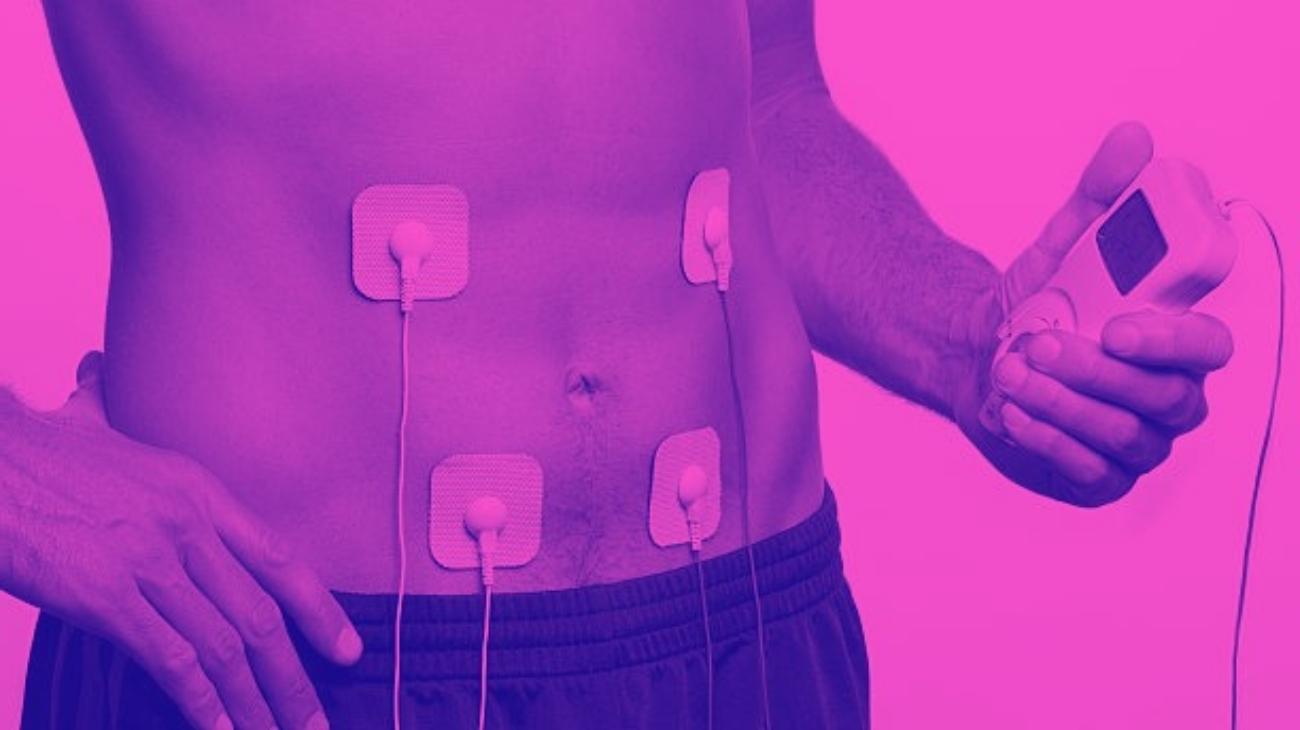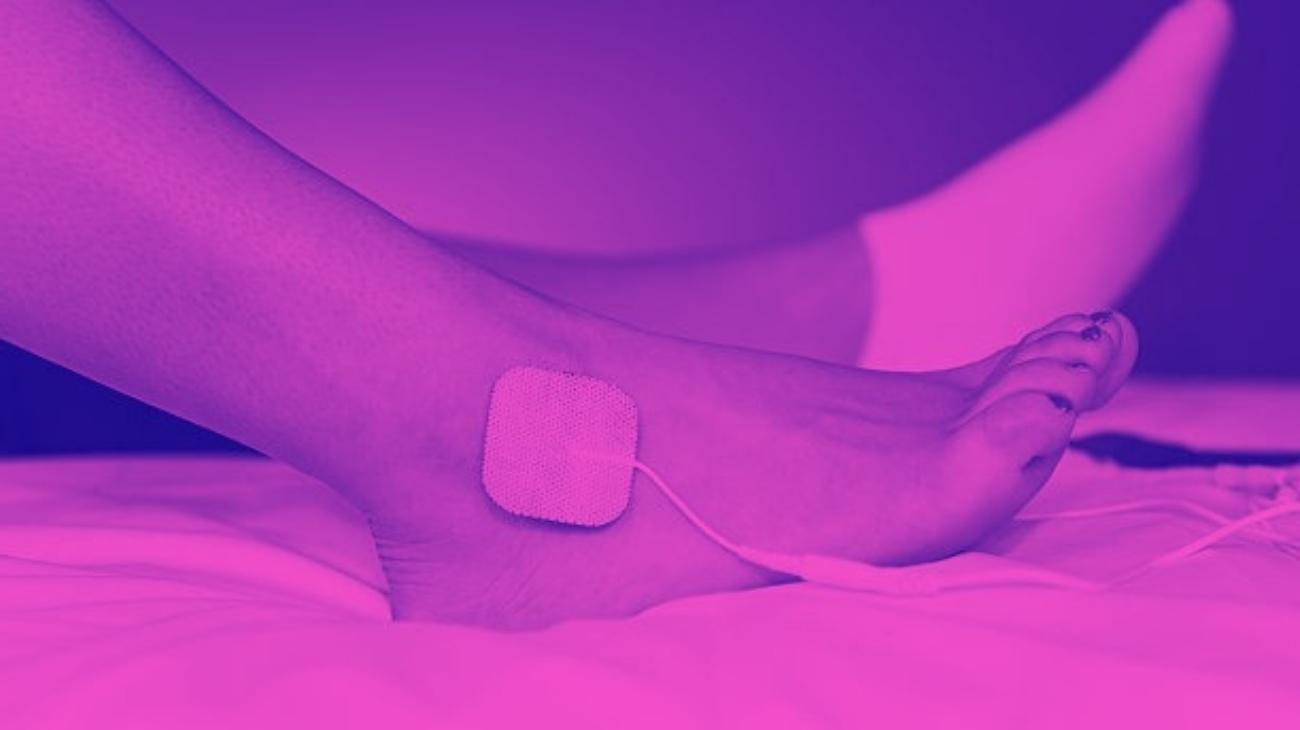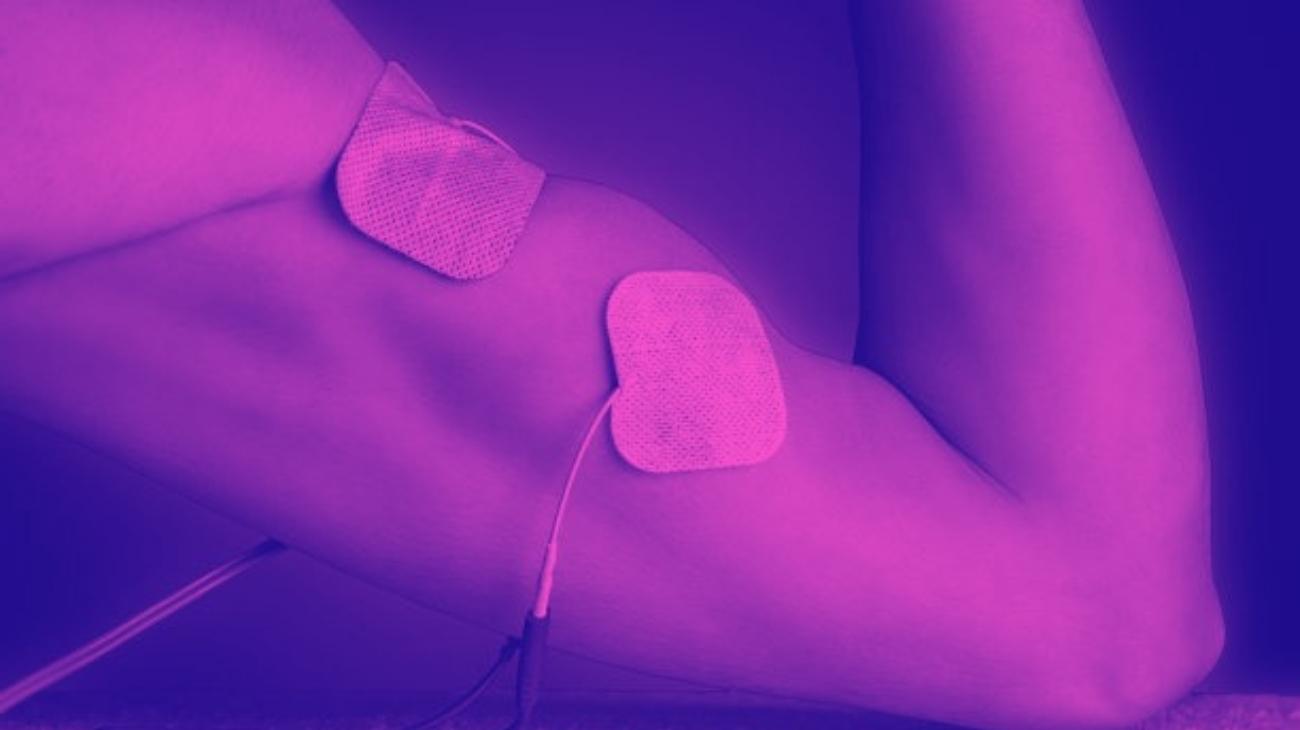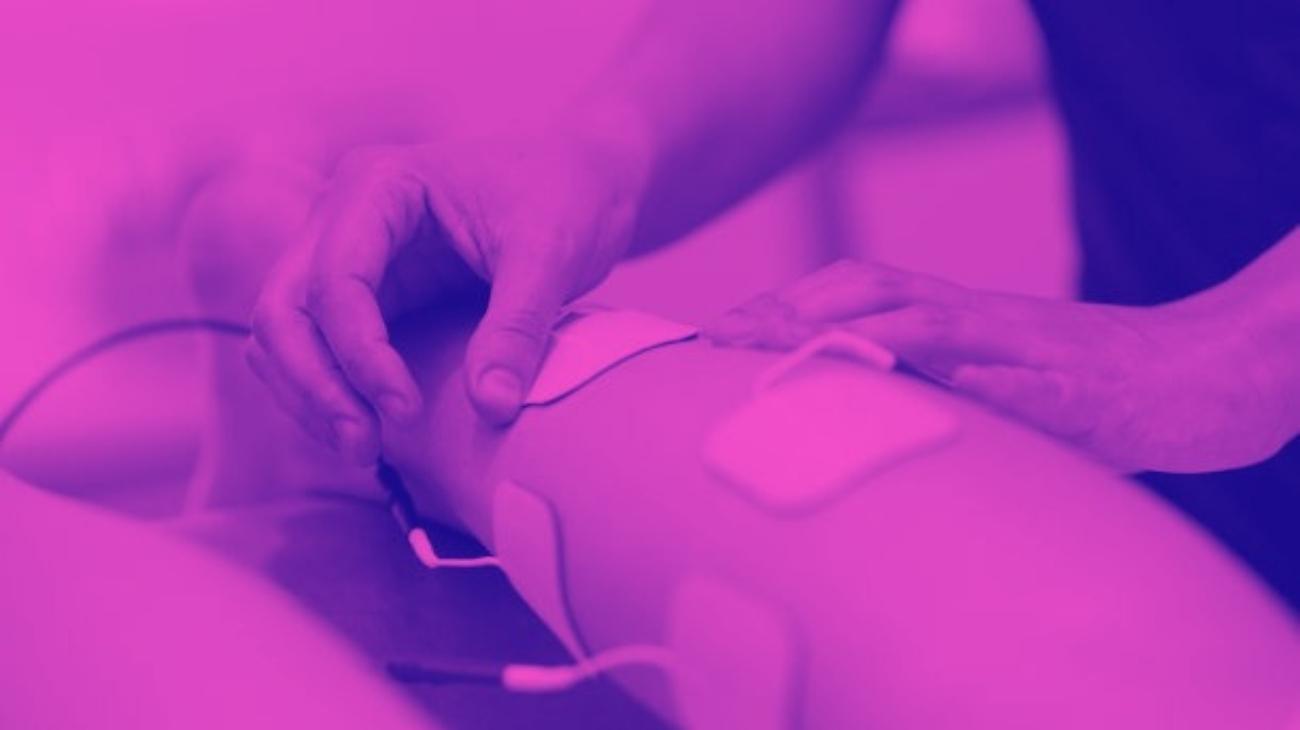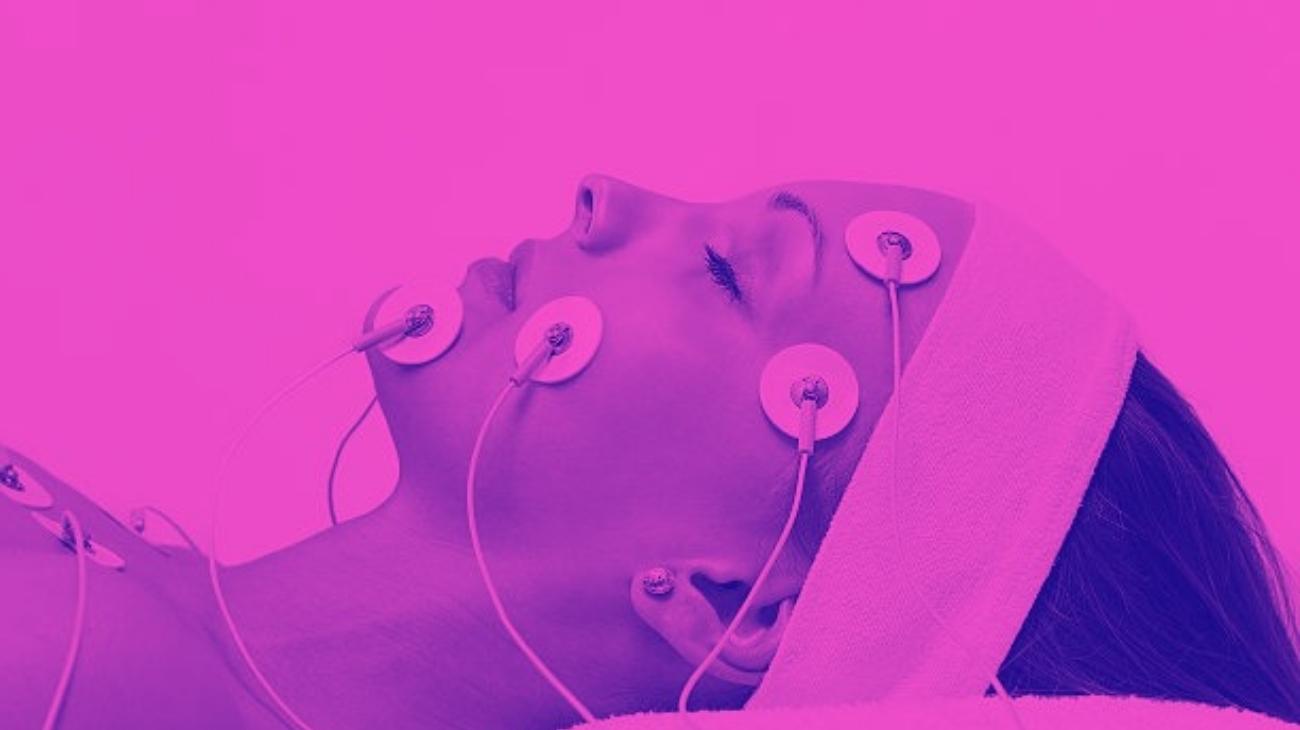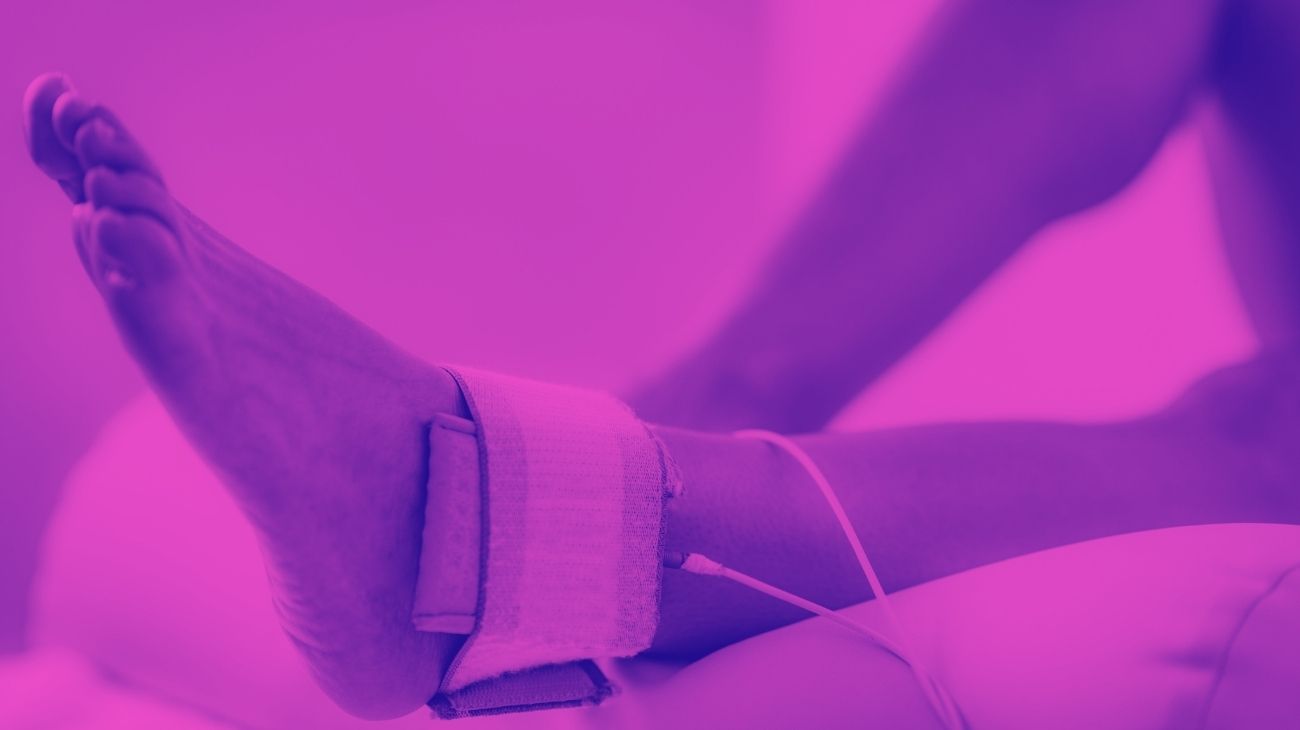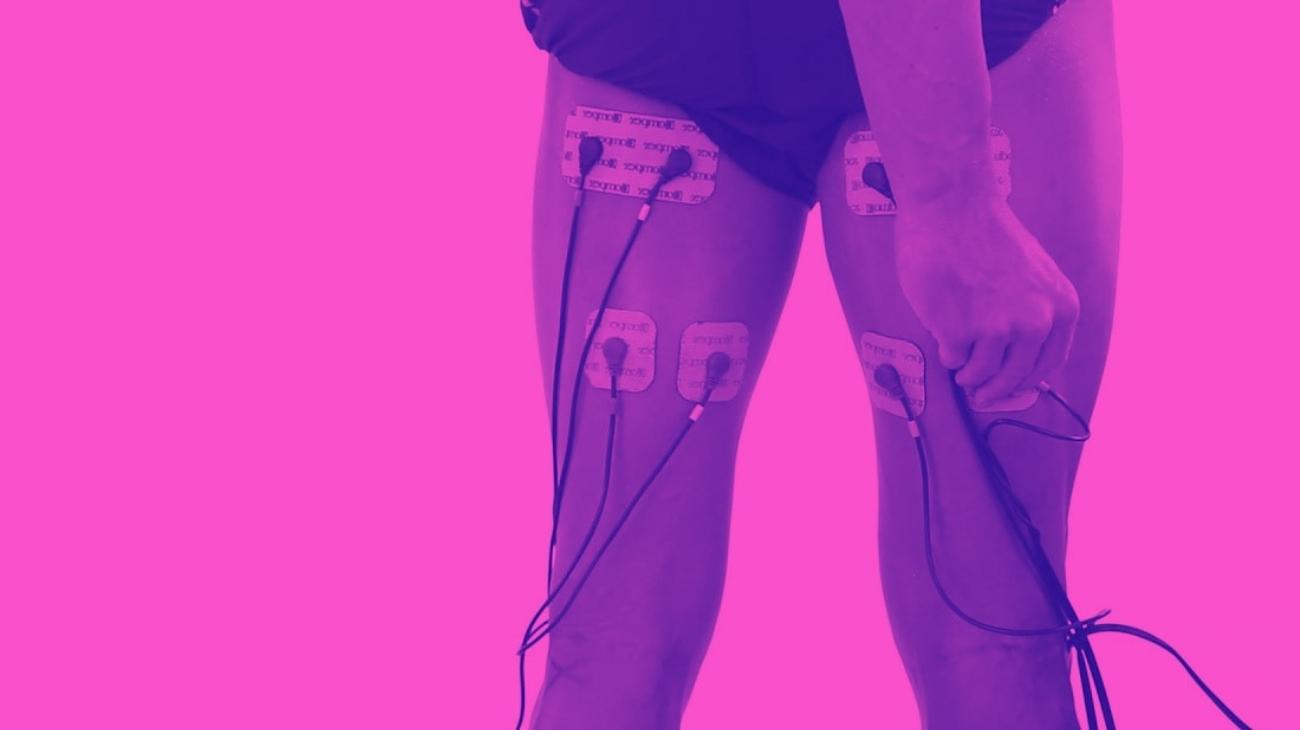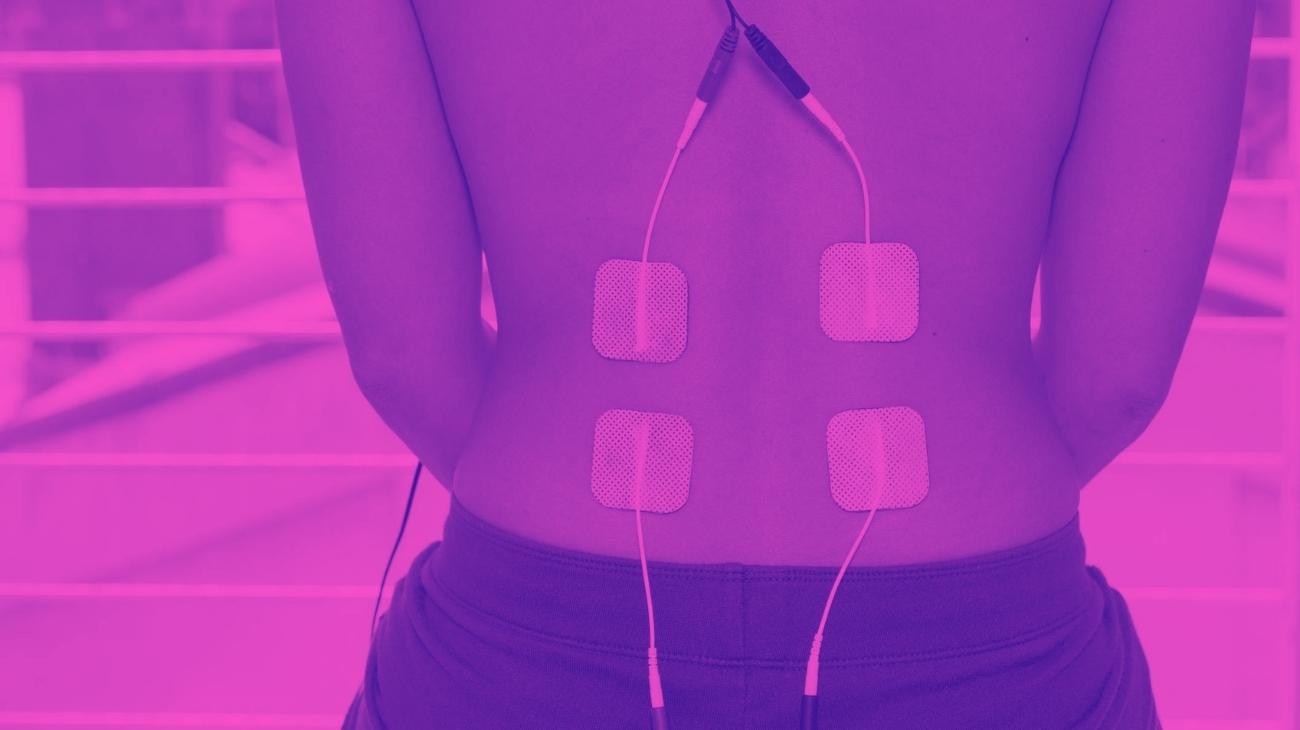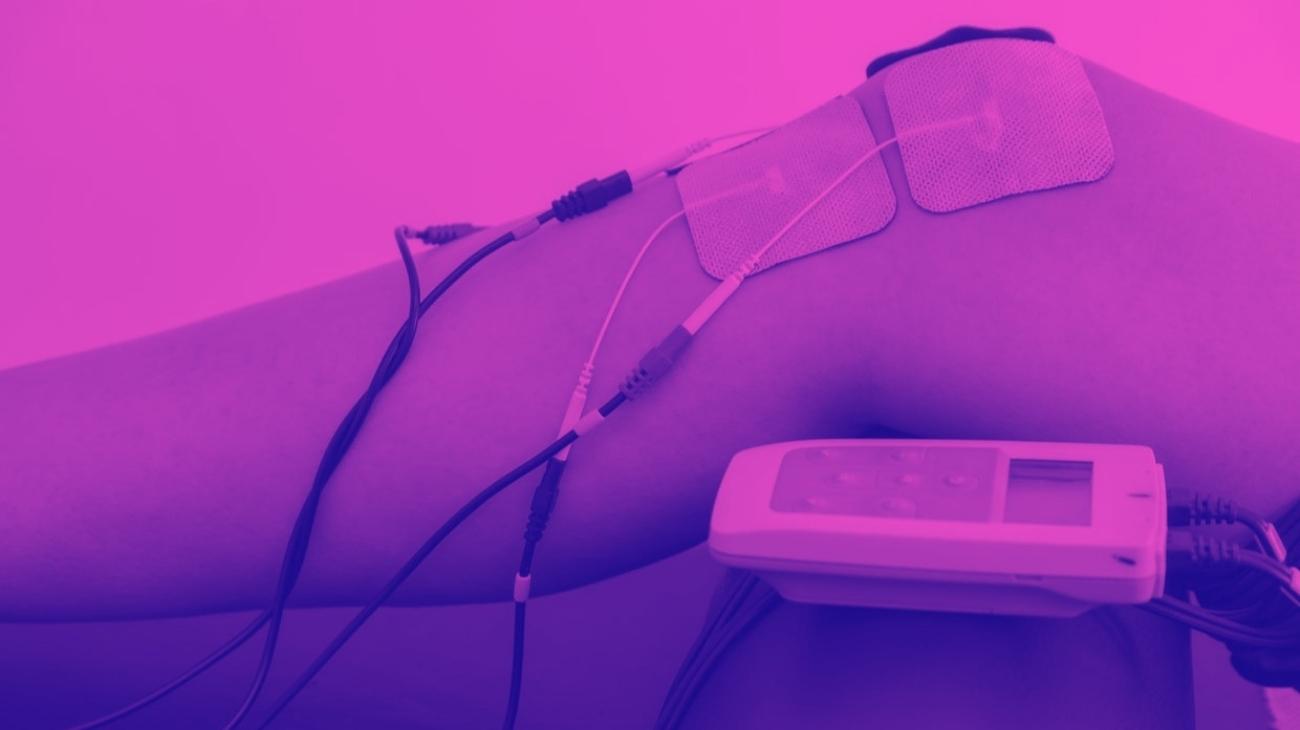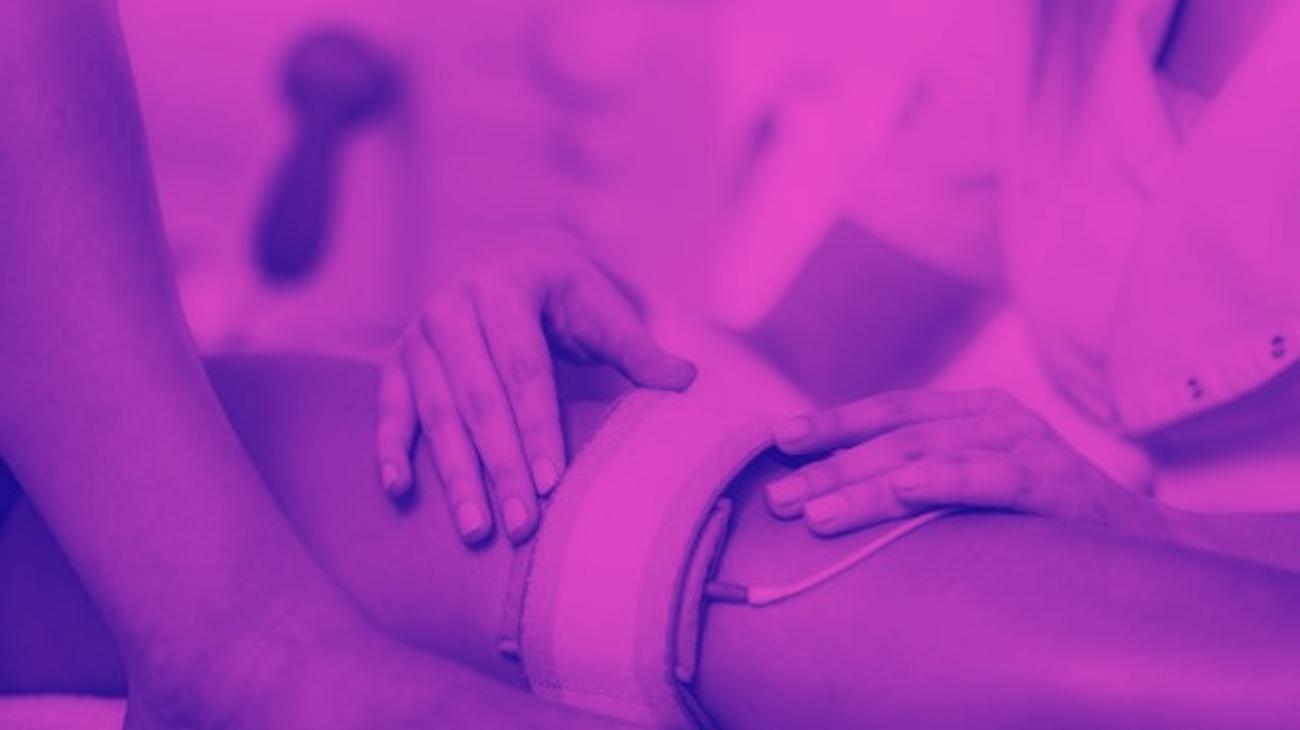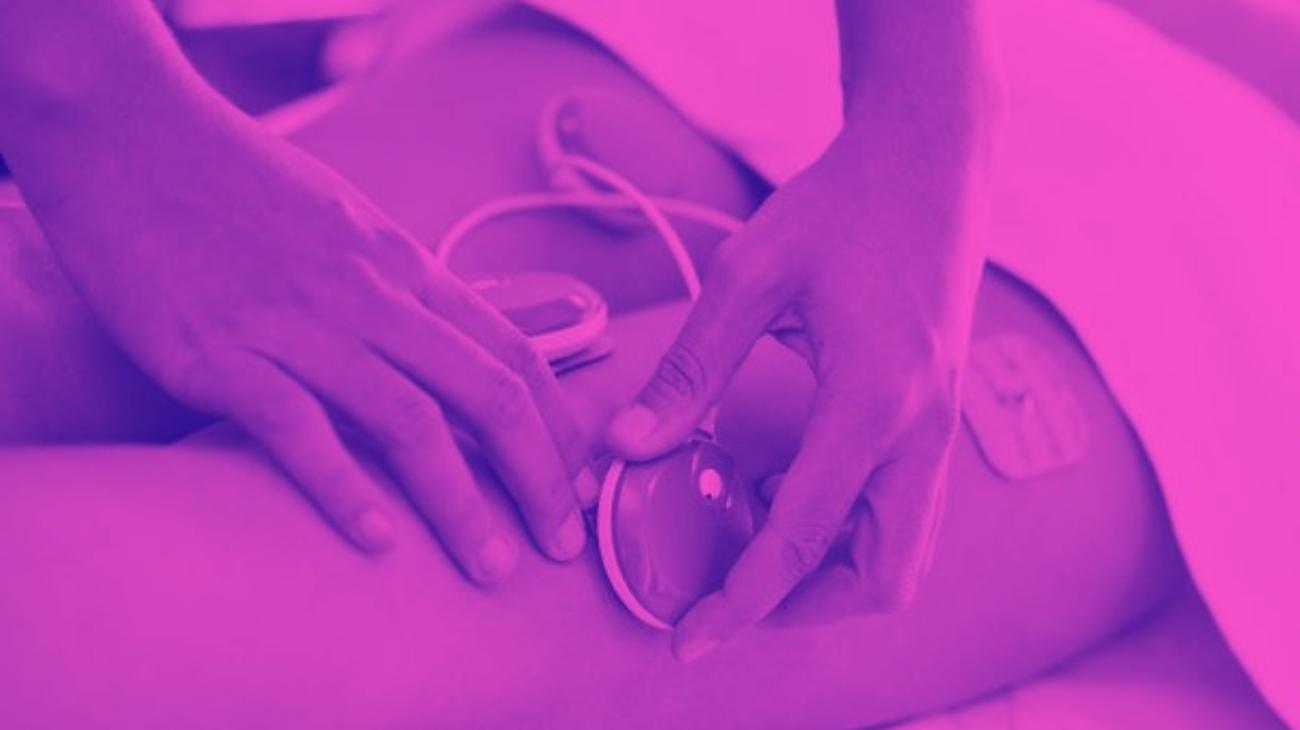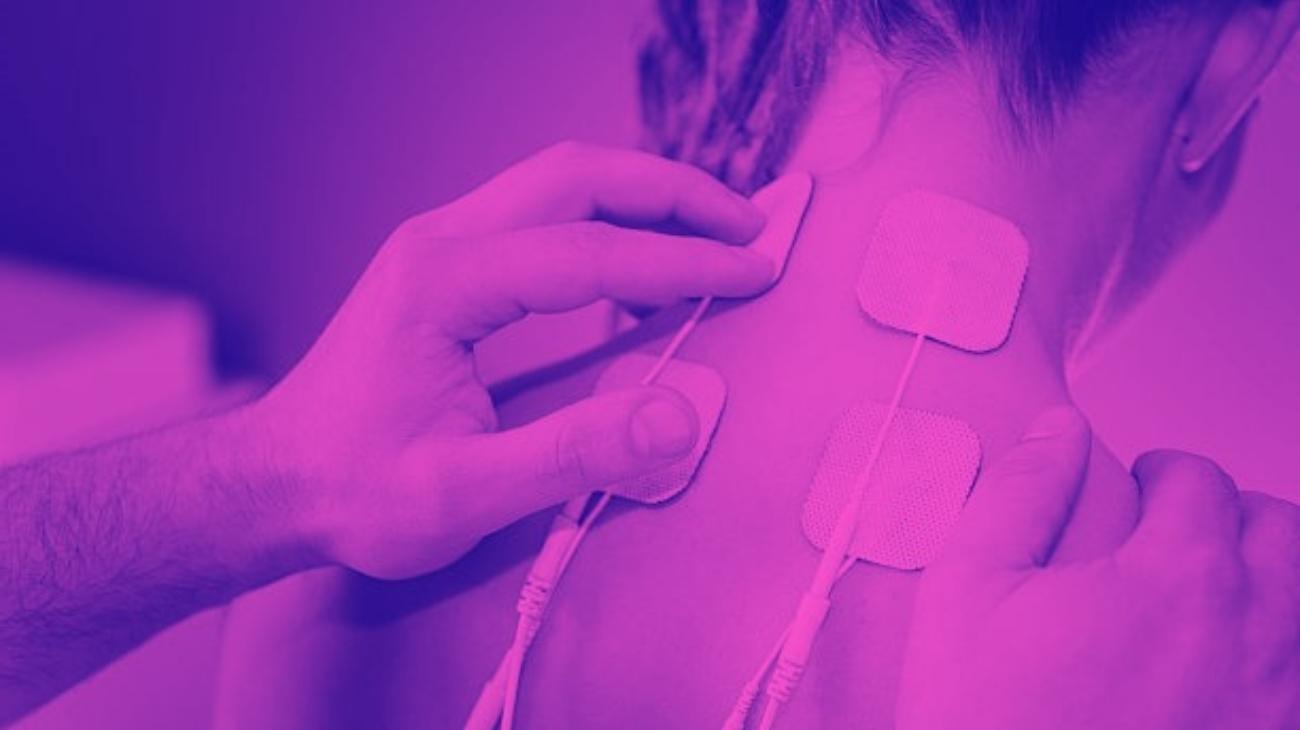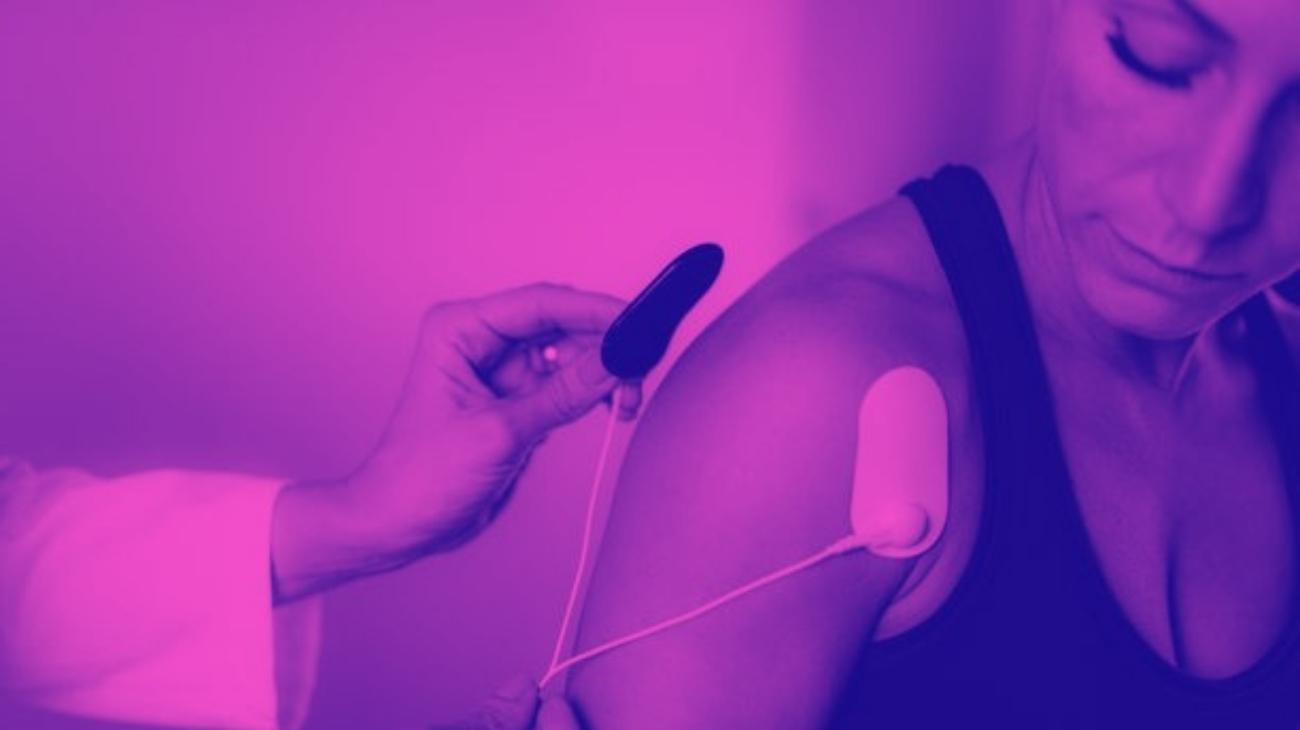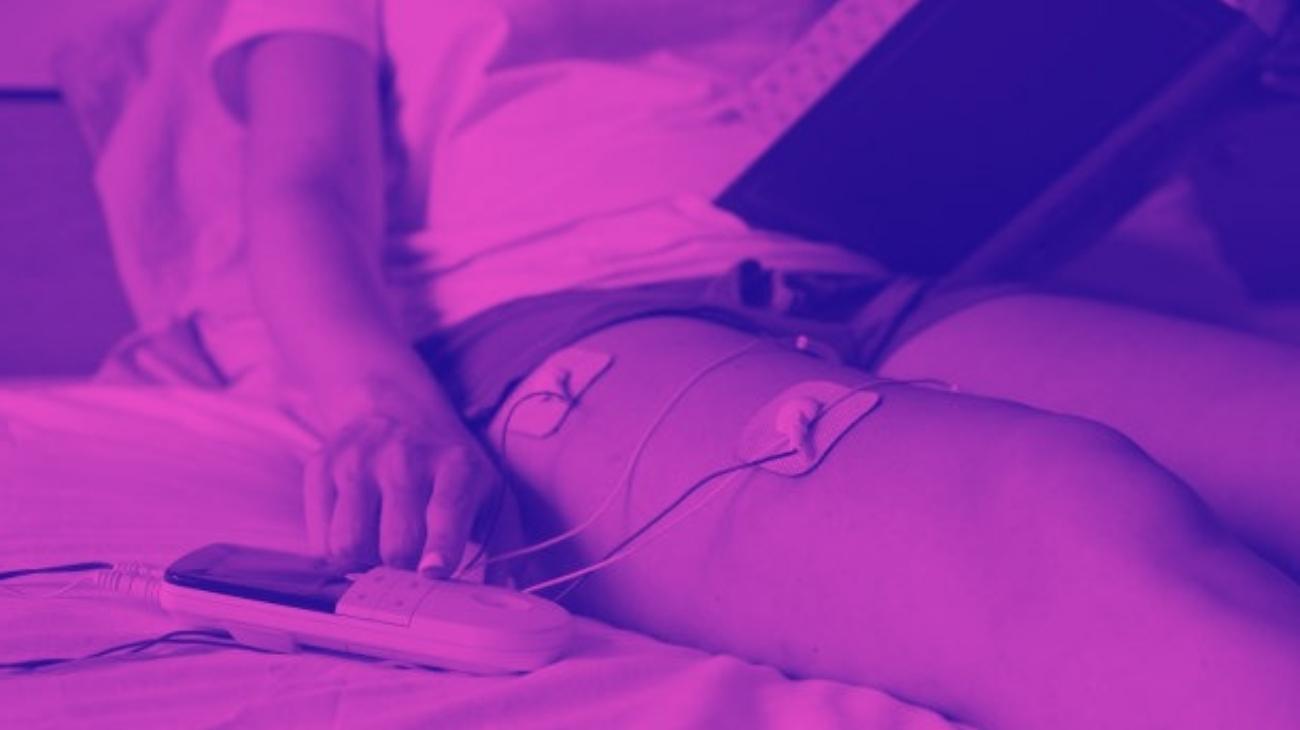- How to use a TENS machine to relieve hip pain?
- Best TENS machines for hip injury recovery
- How to use EMS muscle electrostimulator for the hip joint?
- Best EMS electrostimulators for strengthening hip muscles
- Video: How to place electrodes pads on the hip?
- More types of EMS stimulators and TENS machines you should know about
- Most common types of hip injuries
- Differences between TENS and EMS: Which to use for hip pain?
- Contraindications in the use of electrodes and electrotherapy
The hip is one of the most used joints in the human body. Also known as the coxofemoral joint, it belongs to the trunk and together with the musculature that surrounds it, it is responsible for giving balance and mobility to the body in both static and dynamic positions.
Despite being designed to be flexible and resistant, the risk of suffering hip injuries is quite high and varies depending on circumstances such as age and physical activity. Fortunately, TENS and EMS electrical stimulation therapies are designed to treat with symptoms the ailments that may affect the joint, so in the following paragraphs, we will teach you how to apply these therapies correctly to treat hip pain.
How to use a TENS machine to relieve hip pain?
The primary objective of TENS units is the treatment of acute or chronic pain caused by injuries or disorders of various origins, and their benefits can be used by both athletes and people with regular physical abilities.
Among these benefits, we can highlight the following:
- Increases pain resistance: the electric shocks produced by TENS devices numb the pain receptors located in the femoral nerve, sacral plexus and obturator nerve, mitigating the sensation of pain and generating immediate relief in the patient.
- Improved blood circulation: the heat applied by the electric shocks causes vasodilation, which improves blood circulation in the affected area and causes a decrease in pain.
- Relaxation of fibrous tissue: the electric shocks cause relaxation of the fibrous tissue supporting the joint, such as the ischiofemoral ligament and the pubofemoral ligament, as well as the rectofemoral tendon, causing an immediate analgesic effect
- Limits the sensitivity of the nociceptors: the nerve endings of the pain receptors in the hip area are numbed, reducing the sensation of pain and generating a feeling of relief throughout the session and several minutes after it.
These benefits make TENS therapy the ideal choice for treating the physiological symptoms of a wide variety of disorders and injuries, from arthritis to trauma. However, it is necessary to highlight the fact that TENS is not a therapy focused on curing injuries, but on treating symptoms, which means that while it will not cure the cause of the pain, it will make the treatment of the pain more bearable.
Best TENS machines for hip injury recovery
TENS therapy has been used for a long time and has proven to be highly effective in treating ailments. For this reason, a wide variety of TENS unit models with different features have emerged. For the treatment of hip pain, the best machines are the following:
- Type: Combo
- Channels: Dual
- Modes/Programs: 24 Modes
- Intensity: Not specified
- Wireless: Yes
- Heat Therapy: No
- Battery: Rechargeable Lithium (up to 20 hours)
- Electrodes: 8 Pads
- Display: Touch
- Size: Not specified
- Includes user manual
- Long battery life (up to 20 hours)
- Portable and small size
- TENS+EMS Combo
- Reduces pain symptoms
- Does not specify intensity levels
- Does not specify measurements and weight
- Does not include carrying bag
It includes 24 massage programs in total, which are designed to treat a wide variety of ailments. Each of the modes has 4 different options to choose from, and comes with all the accessories you may need, from electrodes and guide wires to a user guide and an electrode positioning guide.
- Type: Combo
- Channels: 4
- Modes/Programs: 24 Programs
- Intensity: Not specified
- Wireless: Yes
- Heat Therapy: No
- Battery: Rechargeable Lithium
- Electrodes: 24 Pads
- Display: Digital
- Size: Not specified
- Includes user manual
- TENS+EMS combo
- Includes carrying bag
- Reduces pain symptoms
- Rechargeable battery
- Battery life not specified
- No intensity levels specified
- No heat therapy
It has 4 channels of operation, 5 modes of TENS currents, 3 modes of EMS stimulation; and 24 predefined programs that generate low intensity electrical impulses to stimulate the nerve endings in the treated area, effectively blocking pain signals.
- Type: TENS
- Channels: Dual
- Modes/Programs: 5 Modes
- Intensity: 10 Levels
- Wireless: Yes
- Heat Therapy: No
- Battery: Rechargeable Battery
- Electrodes: 4 Pads
- Display: Digital
- Size: 8.8" x 2" x 7.8" - 1.15 lbs
- Includes user manual
- Prevents muscle atrophy
- Accelerates recovery from sports injuries
- Includes carrying bag
- Reduces pain symptoms
- Non-universal electrode replacements
- Not suitable for muscle hypertrophy
- Few types of programs
The TENS 7000 muscle stimulator includes one of the most complete electrical stimulation therapy packages you will find. It includes 1 TENS 7000 unit, 2 guide cables, 4 packs of reusable pads, 1 9-volt battery, 1 instruction manual and a hard case to carry your electrostimulation equipment wherever you want.
- Type: TENS
- Channels: 4
- Modes: 24 Programs
- Intensity: Not specified
- Wireless: No
- Heat therapy: No
- Battery: Rechargeable
- Electrodes: 8 Pads
- Display: LCD
- Size: Not specified
- 4 independent channels
- Provides cramp relief
- Portable Device
- Promotes tissue healing
- 24 programs
- Few electrodes
- Does not specify battery life
- Does not specify intensity and size
It has 24 clinically proven massage programs, which are divided into 12 TENS therapy programs and 12 muscle stimulation training modes. It has a long-life rechargeable lithium battery that will give you a great autonomy of several hours of continuous use, eliminating the extra cost of buying replacement cylindrical batteries.
- Type: TENS
- Channels: 4
- Modes: 15 Programs
- Intensity: 20 Levels
- Wireless: No
- Heat therapy: No
- Battery: Rechargeable
- Electrodes: 8 Pads
- Display: LCD
- Size: Not specified
- Independent control mode
- Instant pain relief
- 20 intensity levels
- 15 different working modes
- Portable device
- Battery life not specified
- Does not specify dimensions and weight
- No heat therapy
All its modes of use are FSA and HSA approved, making it completely safe for anyone to use. It can be operated and set up very easily. The package includes reusable electrodes coated with adhesive gel in 3 sizes: 2 units of 2x4 inches, 4 units of 2x2 inches and 2 units of 1.5x1.5 inches.
How to use EMS muscle electrostimulator for the hip joint?
Although muscle electrostimulation therapy is not recommended for the treatment of hip pain, there are a lot of benefits that can be taken advantage of this physiotherapy technique.
EMS therapy uses devices that emit medium to high intensity electrical impulses, whose frequency varies between 70 and 150 Hz, generating contractions that strengthen the muscles in the localized area, so its use is recommended for a single muscle group simultaneously.
Because of this, the muscles surrounding the coxofemoral joint benefit from EMS treatment, and can receive a wide variety of benefits, among which we can highlight the following:
- Muscle mass hypertrophy: EMS stimulation generates contractions in specific muscle groups which show an increase in mass after a few sessions.
- Fat reduction: during EMS sessions there is an increase in metabolic activity, which results in a higher body fat burning rate.
- Improved physical performance: the application of electrical impulses to the gluteus medius, gluteus maximus and tensor fascia lata muscles increases their strength, generating an improvement in balance and posture, which leads to an increase in physical capabilities.
- Minimal joint tension: the increase in muscle mass and strength is achieved through electrical impulses instead of heavy lifting, considerably reducing tension in muscles and joints.
Best EMS electrostimulators for strengthening hip muscles
While EMS will not produce a reduction in pain levels, its benefits to the muscle groups surrounding the hip are many and varied, depending on which device you use. Here's a list of some of the best EMS machines for hip muscle conditioning:
- Type: Combo
- Channels: 4
- Modes/Programs: 10 Programs
- Intensity: 5 levels
- Wireless: No
- Heat Therapy: No
- Battery: Rechargeable
- Electrodes: 12 electrodes
- Display: Digital
- Size: 5.38" x 3.75" x 1"
- Includes user manual
- Accelerates recovery from sports injuries
- Rechargeable battery
- Good quality
- Includes carrying bag
- Few intensity levels
- No weight specified
It includes 10 electrostimulation modes divided into 3 recovery modes, 2 warm-up modes, 1 TENS massage mode and 4 strength training modes. It also has 5 levels of progressive intensity that will help you improve your strength, endurance and combat various ailments caused by exhaustion.
- Type: Combo
- Channels: Dual
- Modes/Programs: 36 Modes
- Intensity: 20 Levels
- Wireless: Yes
- Heat Therapy: No
- Battery: Rechargeable Lithium (up to 30 hours)
- Electrodes: 24 Pads
- Display: Digital
- Size: Not specified
- Long battery life (up to 30 hours)
- Prevents muscle atrophy
- Improves joint mobility
- TENS+EMS Combo
- Reduces pain symptoms
- No heat therapy
- No touch screen included
- Does not specify measurements and weight
The Mollan TENS electrostimulation unit features a dual independent channels function, whereby you can program two separate massage modes on channels A and B of the device, which means you can apply a pain relief massage mode on one channel, while using a muscle electrostimulation program on the other.
- Type: Combo
- Channels: -
- Modes/Programs: 15 Programs
- Intensity: Not specified
- Wireless: Yes
- Heat Therapy: No
- Battery: Rechargeable Lithium
- Electrodes: 4 Pads
- Display: No display
- Size: Not specified
- TENS+EMS Combo
- Control from mobile app
- Rechargeable battery
- Includes user manual
- Reduces pain symptoms
- Does not specify battery life
- Does not specify intensity levels
- Does not specify measurements and weight
To provide one of the fastest and most comprehensive improvements for pain of all types, the PowerDot 2.0 has over 400 different usage modes with different settings, aimed at muscle recovery, performance enhancement and pain relief, which can be adapted according to recent activity, fatigue level and the area to be treated. All these options can be managed through its mobile application, which is available for both Android and iPhone mobiles.
- Type: Combo
- Channels: 4
- Modes: 24 Programs
- Intensity: 30 Levels
- Wireless: No
- Heat therapy: No
- Battery: Rechargeable (20 hours of use)
- Electrodes: 10 Pads
- Display: Digital
- Size: Not specified
- Includes carrying bag
- With 30 intensity levels
- 24 modes
- With 10 pads
- Timer option
- No heat therapy
- No size specified
It has 24 modes of use and 30 intensity levels that you can program individually on each of its 4 channels, so you can apply them to different parts of the body, or even different people, simultaneously. Its high-powered battery will allow you to apply electrostimulation for 20 continuous hours, and is fully rechargeable through the current or from a USB charger.
- Type: Combo
- Channels: 4
- Modes: 20 Programs
- Intensity: 40 Levels
- Wireless: No
- Heat therapy: No
- Battery: Rechargeable
- Electrodes: 12 Pads
- Display: Digital
- Size: Not specified
- Features 20 modes
- Includes 40 intensity levels
- Portable device
- 12 pads with different sizes
- Rechargeable battery
- Somewhat slow charging
- No size specified
It has 20 modes of use and 40 adjustable intensity levels, as well as a time controller that allows you to adjust the therapy sessions according to your needs. Its compact size makes it incredibly discreet, so you can take it to the office, on a trip, on the street or wherever you like.
Video: How to place electrodes pads on the hip?
Electrodes for hip
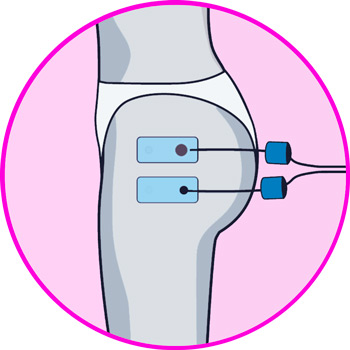
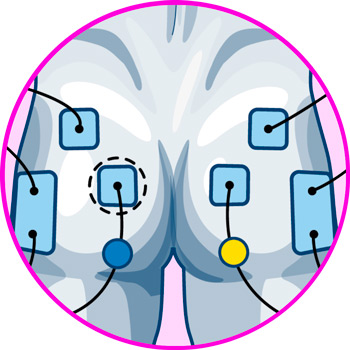
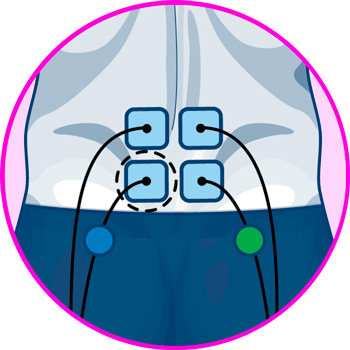
- For iliotibial band syndrome: Pain from this type of injury is usually felt in the lateral part of the hip, down the thigh and even radiating to the buttocks.
- For osteoarthritis of the hip: Osteoarthritis is one of the most complex conditions to treat because the pain can be felt in several areas, from the side of the hip, to the abductors and buttocks. Depending on your case, what you have to do is to locate the point of pain and place the electrodes there.
- For sacroiliitis: This is a condition that manifests itself with pain in the lumbar area, and is also considered a back injury. For this we must place the pads on the upper part of the buttocks, and in the lumbar area to enclose the ailment in a quadrant.
More types of EMS stimulators and TENS machines you should know about
Most common types of hip injuries
The hip joint is closely linked to the mobility of the legs and torso, so it is constantly subjected to a varying amount of stress both in motion and in static positions.
As such, it is vulnerable to a variety of injuries, such as:
- Fracture: it is an injury of medium to high severity depending on factors such as the patient's age and defenses. It is caused by severe impacts, although in older people with weak bones it may occur when turning while standing. Its main symptoms are bruising, pain in the hip or groin and swelling
- Dislocation: A hip dislocation occurs when the head of the femur moves out of place in the socket of the pelvic bone. This injury can be caused by falls or sports injuries, and its symptoms include severe pain and deformity in the affected joint.
- Strain: occurs when one or more of the muscles that stabilize the hip are overstretched or torn, this can occur due to excessive tension or overload from sports, falls or daily activities, and is accompanied by pain with throbbing, a feeling of tightness and limitation in hip movement.
- Arthritis: in the hip, the most common type of arthritis is osteoarthritis, which occurs when the cartilage that surrounds the bones in the coxofemoral joint is eroded, causing inflammation, pain that may extend to the knee and stiffness. The main causes of this pathology are injuries, age and genetics.
- Bursitis: hip bursitis occurs due to inflammation of the synovial bursa that covers the bony protrusion of the hip, can produce intense pain in the hip point that extends to the thigh area and can worsen when pressure is exerted on the affected area. Previous injuries or surgeries, as well as differences in leg length may be risk factors for bursitis.
Differences between TENS and EMS: Which to use for hip pain?
While the principles behind transcutaneous electrical nerve stimulation (TENS) and electrical muscle stimulation (EMS) therapies are similar, the benefits they offer and the areas of the body they work on are very different, so it is necessary to know these differences before starting therapy.
TENS is a pain treatment technique that uses electrical currents of varying intensity applied to nerve endings in different areas of the body, which aims to numb these nerve endings, thus increasing pain resistance and generating a localized analgesic sensation.
EMS therapy, on the other hand, is a training and fitness method used by both athletes and physical therapists in the rehabilitation of injuries with mild levels of pain. This therapy focuses on the use of electrical impulses that generate muscle contractions that help increase muscle strength and elasticity, as well as increase the speed of recovery.
With this information, we concluded that the most appropriate therapy for the treatment of hip pain is transcutaneous electrical nerve stimulation therapy TENS, since the electrical impulses produced by these devices directly affect the nerve endings located in the femoral nerve and the obturator nerve, generating a feeling of relief in the patient.
On the other hand, EMS is not an indicated therapy for hip ailments merely because the electrical discharges produced by its devices generate contractions that act on the muscle tissue, not on the nerve endings, so that in the best case it has no effect against pain, and in the worst case, it can be counterproductive when it comes to certain injuries.











